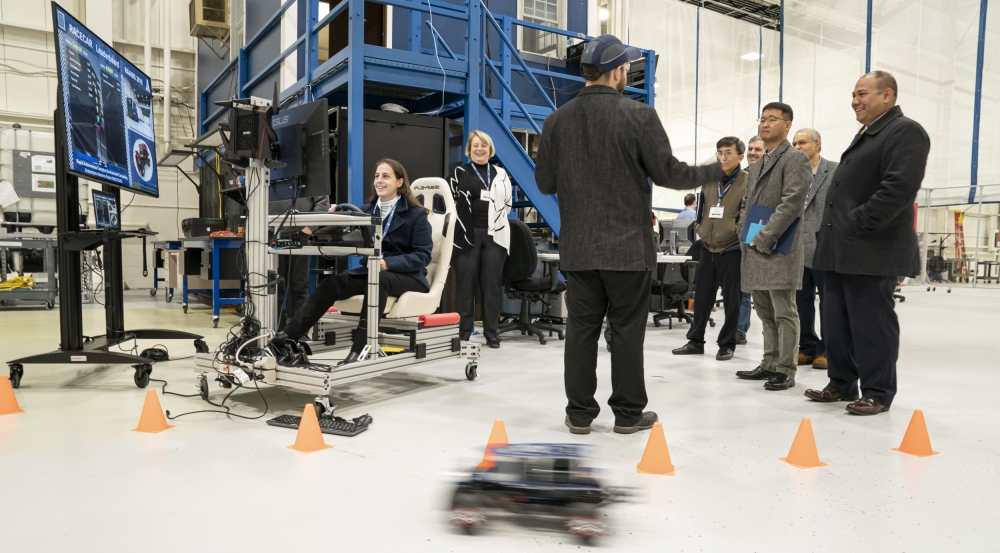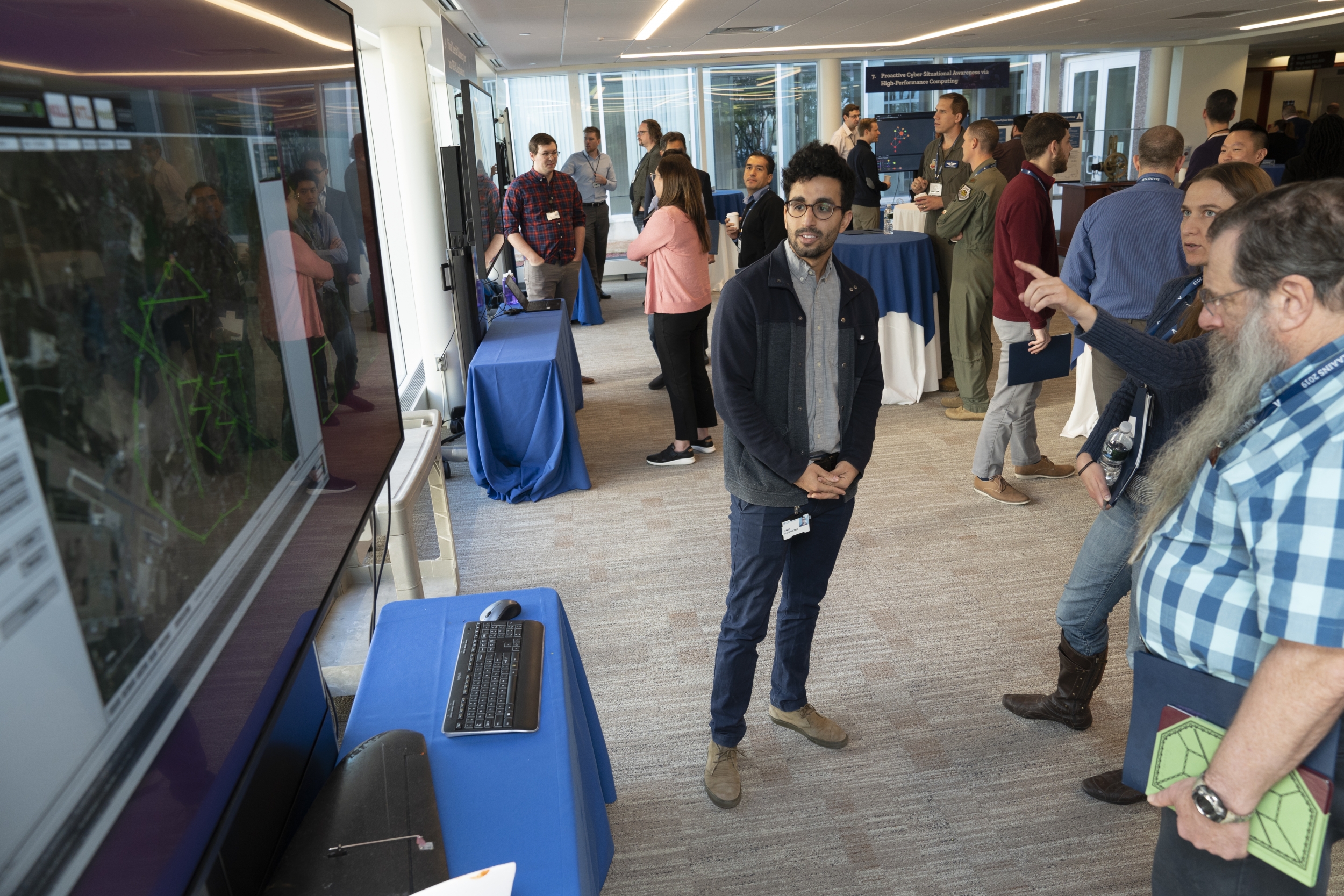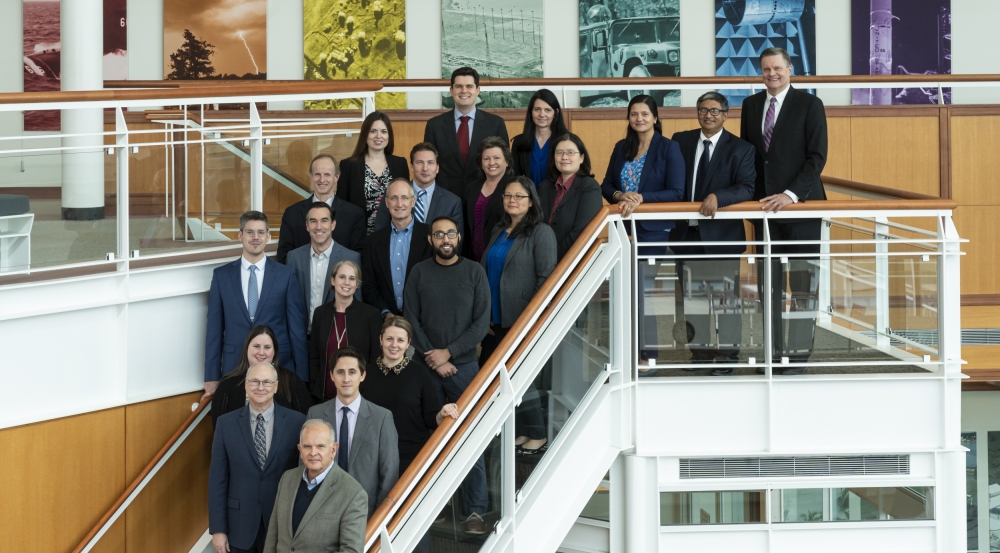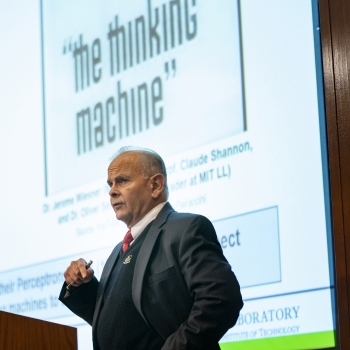Lincoln Laboratory hosts inaugural workshop on artificial intelligence for national security

From November 13 to 15, Lincoln Laboratory hosted its first Recent Advances in Artificial Intelligence for National Security (RAAINS) workshop. RAAINS was established to expand on recent successes the AI community has had in applying AI to national defense by diving deeper into the technical details of state-of-the-art national security AI applications. The workshop was chaired by Anu Myne from the Lincoln Laboratory Technology Office, with Sanjeev Mohindra, leader of the Artificial Intelligence Technology Group, and Joseph Campbell, leader of the AI Technology and Systems Group, as vice chairs.
"AI is widely recognized to have tremendous strategic and national importance to the Department of Defense [DoD] and intelligence and law enforcement communities," Campbell said. "For example, the Under Secretary of Defense for Research and Engineering listed AI and machine learning as a top-10 priority in 2018, and the White House issued an executive order on maintaining American leadership in artificial intelligence in 2019. It is through workshops like RAAINS that we make our tremendous AI capabilities more widely known to the community, describe where the Laboratory is taking AI, and present a vision of where AI is heading for the United States, our allies, and our adversaries."
Attending RAAINS were 297 people representing 187 outside organizations — 53% from government, 21% from the military, and the rest from industry, national labs, and academia. "We were pleased with the turnout, which didn't come as a surprise given the strong interest in the field and its application to problems of national security," Myne said.
The agenda for the workshop included three keynote speakers and three main sessions titled Artificial Intelligence Landscape, AI Applied to National Security, and AI Future Directions.
"While the first session provided perspectives from the DoD and intelligence communities, the second and third sessions covered a wide range of AI research topics — such as deep learning, graph-based learning, probabilistic programming, and synthetic data generation — and their application into the Laboratory's core mission areas," Myne said. "Many impactful advances have been and are being made today, and researchers in the field are dedicated to finding solutions to address outstanding challenges."
A number of presentations throughout the workshop highlighted the challenges of working with limited datasets. Compared to the large, open datasets that are used in academia and industry, data for DoD applications is much more scarce, and researchers often have to rely on synthetic data and transfer learning.
"Leveraging cutting-edge AI technology has the potential to augment current capabilities and to improve performance in complex environments that stretch or surpass the limits of humans," said Dwight Hutchenson from Lincoln Laboratory, who led an AI for DoD Missions sub-session with colleague Navid Yazdani. "The nature of the missions and types of data available often aren't suited to use commercial off-the-shelf technologies, so it's important for places like the Laboratory to bridge this gap or to create entirely new solutions."
A presentation by Lin Li titled Counter Illicit Marketplaces on the Web received the most audience votes for favorite talk on the workshop's feedback questionnaire.
Posters and demonstrations set up either outside the auditorium or in the various AI and autonomy research and development facilities around the Laboratory were organized by Paula Ward, a group leader at the laboratory, and Elena Zorn and Cindy Fang, members of the technical staff. "In addition to traditional static posters, video posters and hardware demonstrations helped exemplify the dynamic nature of AI applied to various national security problems," Ward said.

“These presentations demonstrated exceptional quality and a breadth of topics,” Zorn noted, adding, "They provided ample opportunity for Laboratory employees to discuss their research and connect with attendees who shared common interests."
On the day prior to the opening of the workshop, optional courses offered by Laboratory staff covered three key AI research areas: computer vision, natural language processing, and autonomy. Each course provided participants with a technology tutorial and used real-world examples to demonstrate the fundamental concepts. For example, the autonomy course showcased the Rapid Autonomous Complex-Environment Competing Ackermann-steeRing (RACECAR) robotic platform used in a program offered through the Beaver Works Summer Institute. The course taught attendees the underlying principles of programming a multisensor-equipped system like RACECAR, covering the background of AI, machine learning, deep learning, and convolutional neural networks. It closed with a live demonstration of the entire machine learning pipeline of the RACECAR platform.
"A highlight of the course was showing off the neural network, which enables RACECAR to drive the course differently each lap," said Tate DeWeese, who led the course. "Additionally, it allowed them to see the brittleness of the network when moving cones or reorienting the car. Having a physical system really showed the power of AI while also demonstrating the narrow scope of current AI algorithms."
Feedback from attendees was overwhelmingly positive. According to Campbell, "RAAINS is now ringing inside the Pentagon."
Shane Shaneman, Army–Carnegie Mellon University AI Hub and Army Futures Command Artificial Intelligence Task Force, commented, "I cannot begin to say how blown away I was with the RAAINS event — simply awesome and truly impressive!"
"It was great to be part of this inaugural workshop, and we are now looking forward to future iterations," Myne said. "Surely, there will be many new advances to report on at RAAINS 2020, which will most likely be held in the third week of November next year."

